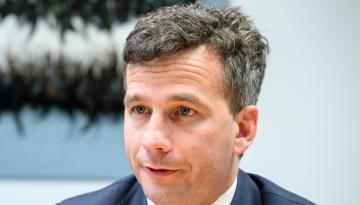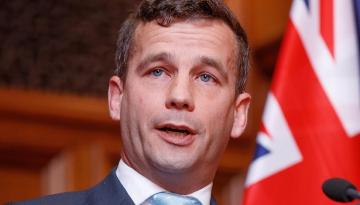There is concern the Government's changes to the free school lunch programme is putting saving money ahead of ensuring tamariki get nutritious meals.
The Government revealed on Wednesday it is cutting $107 million from the school lunches programme while also extending the number of children who will get free meals.
This is because some of the savings will go to providing food for 10,000 children aged between 2 and 5 at low-equity, not-for-profit, community-based early learning services.
All 235,000 students at low and middle-income schools currently receiving free lunches under the Ka Ora, Ka Ako scheme will continue to receive them.
However, for intermediate and high schoolers there'll be an option to opt out if parents want to pack their lunches.
Currently, each lunch costs about $8 - but the new model has budgeted $3 a meal.
However, there is concern cheaper meals will mean kids are getting less nutritional value from them.
Health Coalition Aotearoa co-chair Boyd Swinburn told AM there is strong data to show the Ka Ora, Ka Ako scheme is working well. Swinburn said Ka Ora, Ka Ako had to meet set nutritional guidelines but the new programme has too many unknowns.
"There's a lack of details but I think it's getting bulk packaged food into schools, giving them a whole bunch of pallets they have to store over the term and then they've got to make up the food from those various packaged foods," he told AM co-host Melissa Chan-Green on Thursday.
"This is stuff that doesn't have the depth of evidence behind it that the current Ka Ora, Ka Ako programme has. There has been a lot of research and evaluation into the programme, and we know that it is meeting its objectives which are alleviating hunger in schools, improving the nutrition of the kids, providing jobs...and also reducing the barriers to education."

Swinburn said he's concerned the new programme is taking a quantity over quality approach.
"I think if you drop the cost down to $3 then it's highly likely you're going to drop the nutritional value and the quality of the food," he said.
He added ensuring children get good quality food is crucial because just five percent of Kiwi kids eat the recommended fruit and vegetable.
"We have this huge obesity problem and dental decay, and this (Ka Ora, Ka Ako) is the only programme around that is helping these nutrient issues with kids and it's only for 25 percent of kids.
"What I am really worried about is this is the biggest nutrient intervention this country has ever seen and now it's been pared back with the promise that it's not going to compromise nutrition, it's not going to compromise these goals and I am worried about that."
However, chief executive and co-founder of KidsCan Charitable Trust Julie Chapman said on average, the charity can provide a good meal for $2 and a range of breakfast, lunch and snack items for schools. KidsCan shared its operating model with the Government.
Of the more than $100 million in savings, $4 million will go to extending free kai to 10,000 in-need preschoolers.


